- Map
- Overview
- Days 1-2: Tokyo
- Days 3-4: Mt. Fuji
- Days 5-6: Kyoto
- Days 7-8: Shimanami Kaido
- Day 9: Osaka, Hakone, or Nara
- Day 10: Departure
- With More Time
Lists By Lukiih is readers-supported. When you buy with my affiliate link, I may earn a small commission. Thanks!
📍 Itinerary Map
This itinerary takes you to some of Japan’s top destinations:
- Tokyo – the most popular city
- Kyoto – the city of a thousand temples
- Osaka – the city known as the kitchen of Japan
- Mt. Fuji – one of the country’s most iconic landmarks
- Shimanami Kaido – a unique and tranquil biking route
🇯🇵 Planning a Trip to Japan: 12 Practical Things To Know
🗓️ Itinerary Overview
Below is a great way to spend 10 days in Japan (see how to extend or shorten your trip). This itinerary is well-researched, highlights major attractions, and reflects lessons from my travel experience.
My Japan trip planner has this itinerary pre-filled with more details and tips.

All prices mentioned here are in USD 💵 .
Tokyo (Days 1-2)
Fly into Tokyo and start your Japan trip there.
🇯🇵 Why Visit Tokyo?
Tokyo is Japan’s most visited city. It’s a metropolis with a plethora of authentic food, outdoor spaces, modern architecture, and distinct districts with unique atmospheres.
With endless attractions and activities, it’s a great city that acts as an excellent introduction to Japan for travelers with varying knowledge of Japanese culture.
Tokyo also has many green spaces and local parks, like Yoyogi Park and Hibiya Park, if you want to start leisurely after an international flight.
🚇 Getting to Tokyo
From Haneda Airport, public transport is the best way to get to central Tokyo. From the airport, most visitors travel to one of the city’s major train stations:
- Shibuya Station – Take the Keikyu Airport Line or the Tokyo Monorail, then transfer to the Yamanote Line to Shibuya. You can check out the famous Shibuya Crossing here as your first stop.
- Shinjuku Station – The most direct and easiest way to get to Shinjuku is to take the Haneda-Airport Limousine Bus. This is how I got to Tokyo because my accommodation was nearby and it only cost $9.
- Tokyo Station – You can take the Keikyu Airport Line or the Tokyo Monorail to the station, then transfer to one of the many other lines.
⭐️ Top Attractions in Tokyo
Tokyo has enough attractions that you could spend more than a week exploring them and still not exhaust all of them.
With two days in Tokyo, the best way to explore it is by splitting the city into West and East Tokyo. You can start on either side.
🗓️ Day 1 in West Tokyo
Here are West Tokyo’s biggest attractions, sequenced in the most efficient order:
Stop #1: Shibuya Scramble Crossing
The Shibuya Crossing is one of the busiest intersections in the world and one of Japan’s most iconic symbols. You can come here as your first stop or at any time you want.
Shibuya Crossing is almost always busy, but it’s busiest on weekdays between 3 and 6 pm.

If you want some coffee to start your day, Tokyo has a lot of cafes. You can also try coffee with more unique combinations. For example, Komeda’s Coffee is a Japanese chain that serves sweet red beans with coffee, which I found delicious.
Stop #2: Meiji Shrine and Harajuku
Meiji Jingu is one of Japan’s most revered Shinto shrines and is surrounded by a beautiful park. The park is next to Harajuku, a bustling area famous for its eccentric youth street fashion.
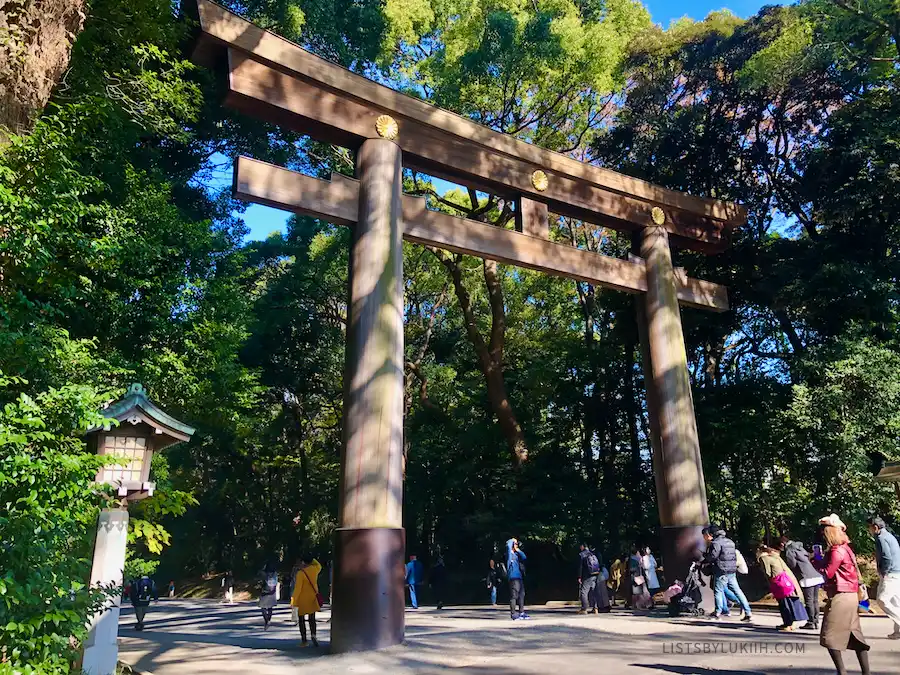
As you consider your lunch options, know that Tokyo has an abundance of delicious local restaurants, but they’re not always easy to find. I share a hack on how to find excellent, authentic restaurants in my trip planner.
Stop #3: Shinjuku Gyoen National Garden
After the chaotic streets of Harajuku, go on a leisurely walk through Shinjuku’s national garden. The garden features three beautiful gardens and is particularly stunning in the fall.
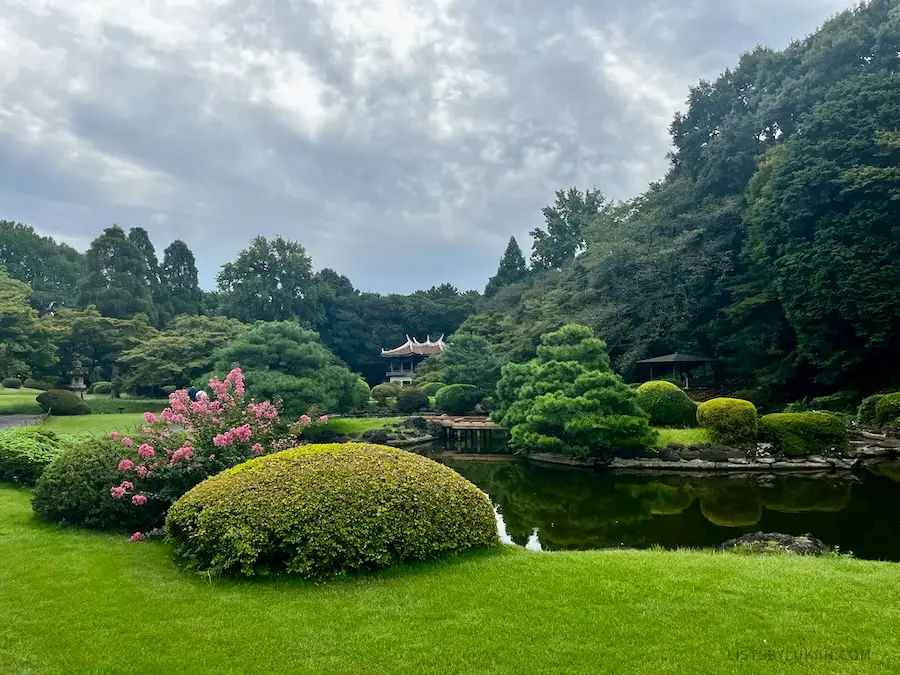
Stop #4: Shibuya Sky or Tokyo Government Building
Visit Shibuya Sky for a breathtaking view of Tokyo around sunset. You’ll also see the iconic Shibuya Scramble from above during a busy time.
If you don’t want to avoid paying Shibuya Sky’s admission fee, the Tokyo Government Building features free observation decks on its 45th floor, which also has a stunning view of Tokyo’s skyline.
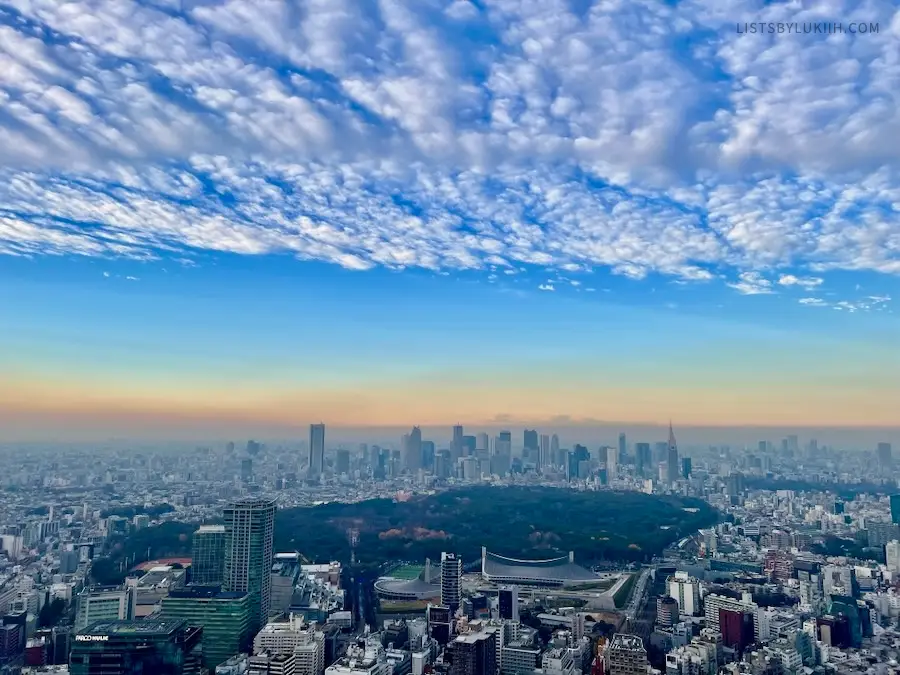
Stop #5: Roppongi or Night Food Tour
At night, head over to Roppongi, Tokyo’s biggest nightlife district.
Alternatively, if you’re a foodie or want to learn about Japanese cuisine, go on a highly-rated food and bar night walking tour.

🗓️ Day 2 in East Tokyo
Here are East Tokyo’s top attractions sequenced efficiently:
Stop #1: Asakusa
Asakusa is a historic area featuring temples in a traditional atmosphere. Senso-Ji Temple is the most well-known temple in the area.
The area is packed with street food stalls serving everything from dango (mochi on a stick) to crispy curry bread, meaning you can spend over an hour doing a food crawl here.
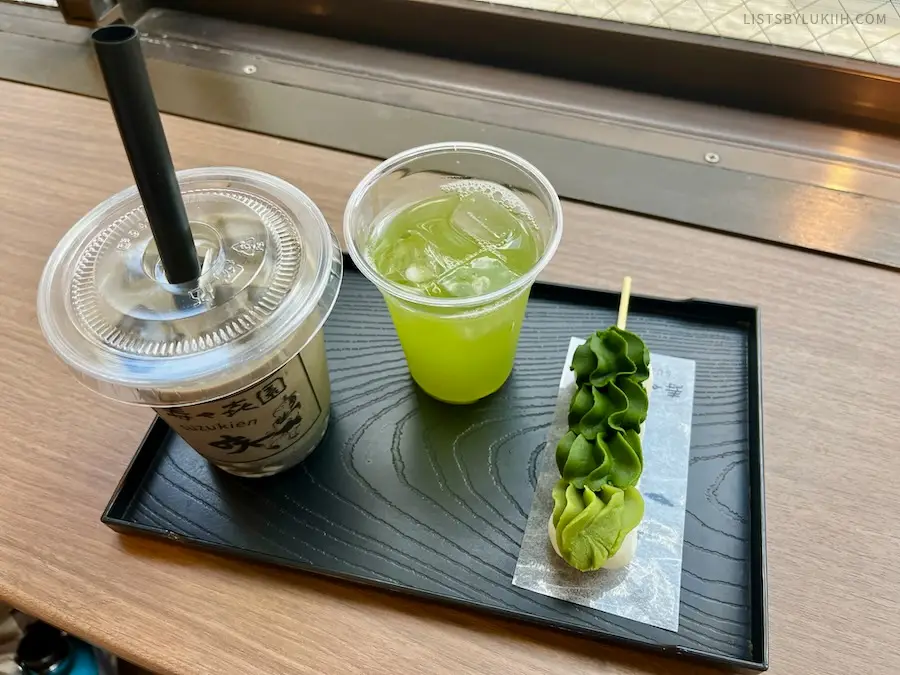
Asakusa is next to the Sumida River, which is lined with landmarks and attractions. You can take a boat ride if you have extra time, or you can do the ride on your last day.
Stop #2: Tokyo Skytree or Ueno Park
You can stay in Asakusa longer, but visit Tokyo Skytree, the city’s tallest building, if you want to move on.
Alternatively, take a short train ride to Ueno Park, Tokyo’s biggest public area.
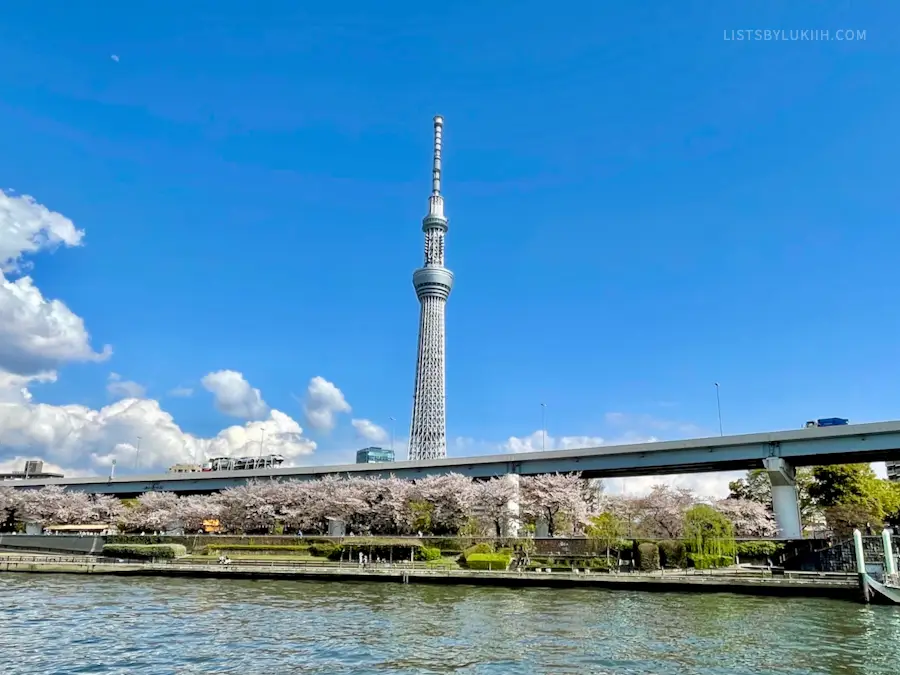
Japan is generally very cycling-friendly. You can take a half-day Tokyo biking tour through some hidden gems. This is one of the tours I wish I had taken in Tokyo.
Stop #3: Ginza
Ginza is one of Tokyo’s most famous and upscale shopping districts. UNIQLO’s and MUJI’s flagship stores are located in Ginza. Both buildings have over six floors of goods from two of Japan’s most internationally-recognized brands.
For more affordable clothing, check out UNIQLO’s sister store, GU. Japanese clothing styles tend to be oversized, and the clothing proportions are excellent for short and medium-height people.
Stop #4: Akihabara
Akihabara is a famous district known for anime, video games, manga, electronics, and maid cafes.
If you’re unfamiliar with anime, you can still spend an hour or two playing arcade games, watching pros win at claw machine games, or exploring electronics stores.
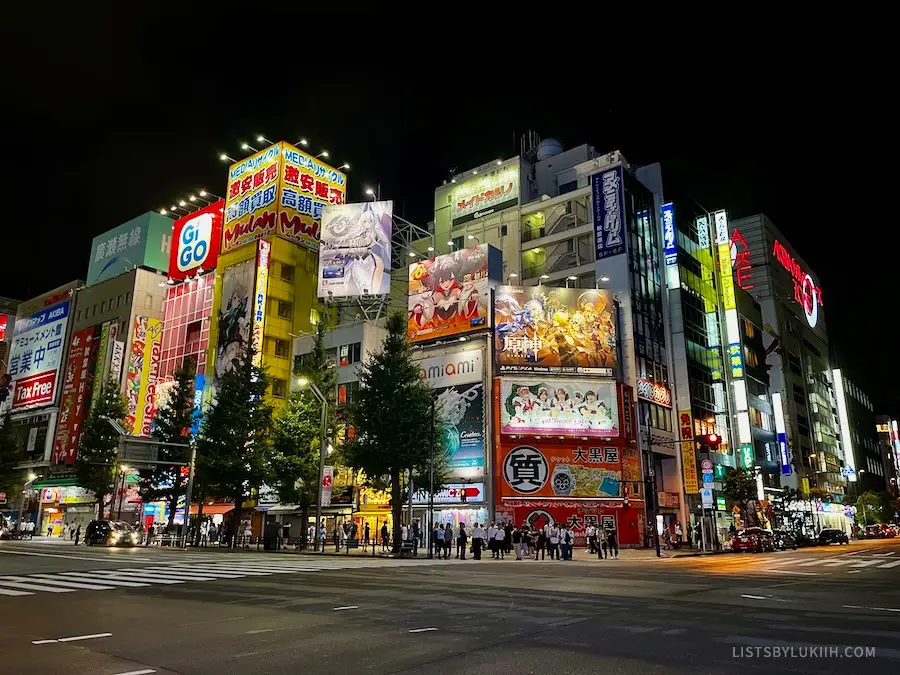
Akihabara is near the famous Tsukiji Fish Market. I recommend skipping it and using Tabelog to find alternative places to eat. While the food at the market is decent, it primarily caters to tourists and is overpriced.

🏠 Where To Stay in Tokyo
You’ll be relying on trains when exploring Tokyo, so staying near a major and central train station like Shinjuku, Tokyo, or Shibuya Station is a good idea:
- Shinjuku – Best for nightlife, shopping, and easy transport access, but can be crowded and noisy.
- Shibuya – Great if you enjoy trendy cafes, nightlife, and shopping, but hotels can be pricey.
- Asakusa – More traditional, close to historic temples, and generally quieter, but farther from modern attractions.
I stayed in two hotels in the Shinjuku and Nihombashi areas (the latter is near the Tokyo Station):
Like many hotel rooms in Japan, my rooms were tiny. I didn’t mind because I spent very little time in them, and I wanted to prioritize affordable hotels that were centrally located.
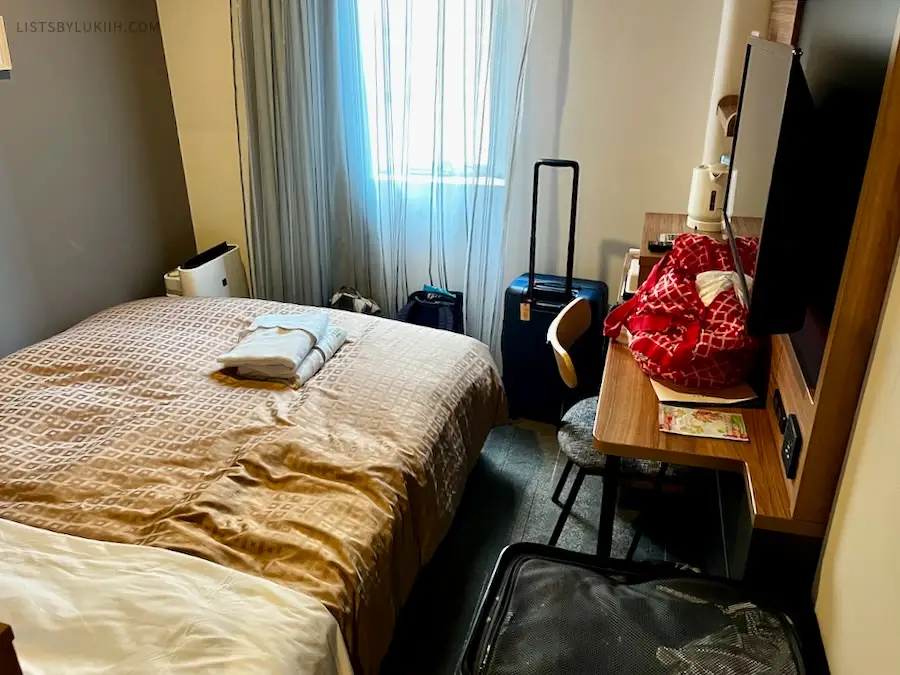
🍀 Lukiih’s Tips for Tokyo
Having been to Tokyo twice, here are my general tips for visiting this city:
- Skip things if it’s too much – Tokyo can feel overwhelming, especially if you’re trying to visit many of the top attractions in a few days. The itinerary above is packed. Don’t feel you need to do everything, so skip things to fit your travel pace and interests better.
- Learn to use Tabelog – Tokyo’s abundance of amazing food is unparalleled. But it’s also crowded with overpriced, touristy restaurants. Learn how to use the Tabelog to find authentic food.

- Have a slower day if you’re hiking Mt. Fuji next – I hiked Mt. Fuji on my third day in Japan, and if you’re planning to do the same as this itinerary suggests, make sure to rest well the day before.
Hike Mount Fuji (Days 3-4)
On your third day in Japan, travel east for an epic sunrise hike.
🌋 Why Visit Mt. Fuji?
Mt. Fuji is an iconic landmark that has been culturally significant for centuries. It is Japan’s highest mountain, one of its most enduring symbols, and a UNESCO World Heritage Site.
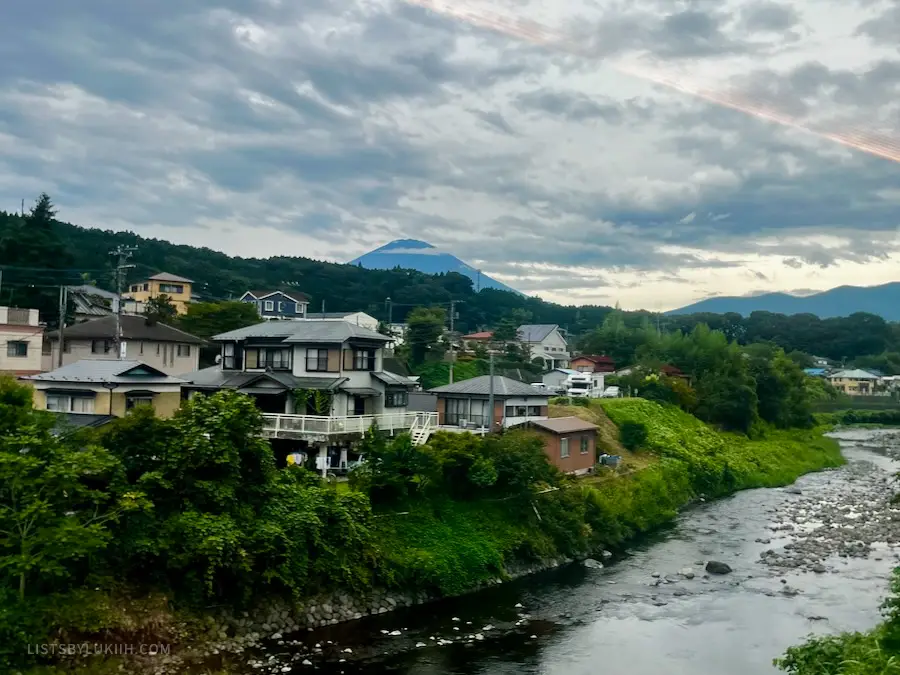
While many visitors visit Mt. Fuji from afar, hiking to the top is a unique, off-the-beaten-path experience. About 300,000 locals and visitors hike Mt. Fuji annually, meaning less than 1% of the 30 million visitors do it.
Hiking to the summit is challenging (it’s not an easy hike), but you’ll be rewarded with a breathtaking sunrise above the clouds and a feeling of personal achievement.
Mt. Fuji is open for hiking only two months yearly, from early July to early September. If you can’t make it during the hiking season, you can take a five-star Mt. Fuji day trip to admire its beauty from afar and then spend an extra day in Kyoto.
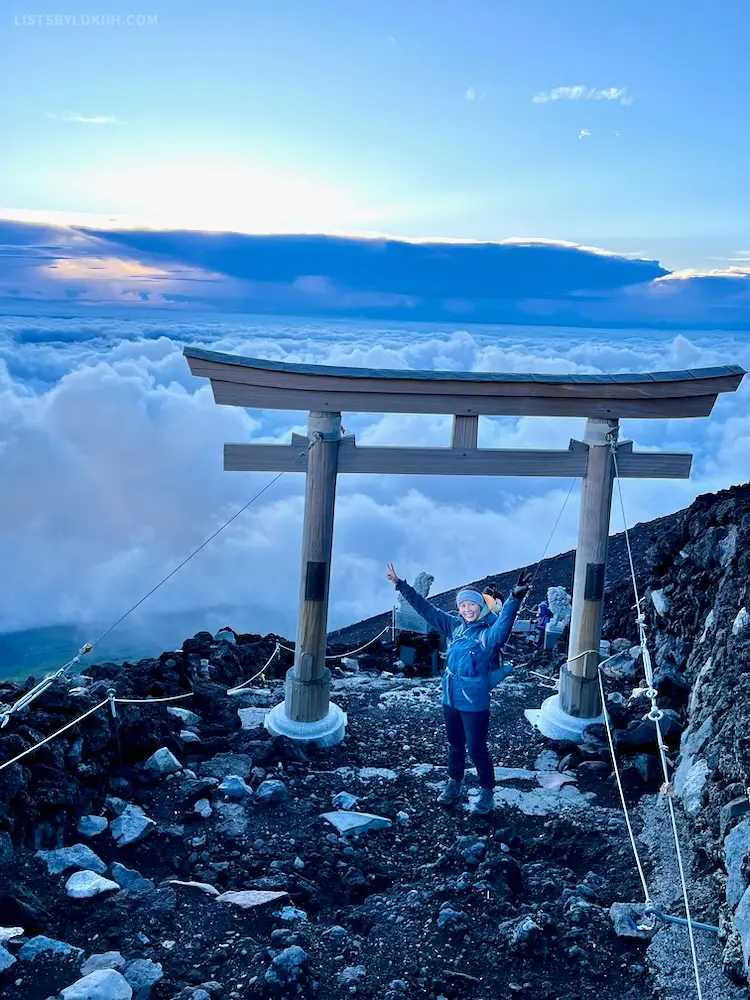
🚇 Getting to Mt. Fuji
Mt. Fuji has four distinct trails that you can take to the top. The trails start in different areas, so how you get to the trailheads varies by trail.
In general, you will need to take a train and bus to get to one of its trailheads from Tokyo.
I did the Subashiri Trail, the most scenic route on Mt. Fuji, which starts near Gotemba City. I took a local train from Shinjuku Station in Tokyo to Gotemba Station. I caught a direct bus near the station to the trailhead.
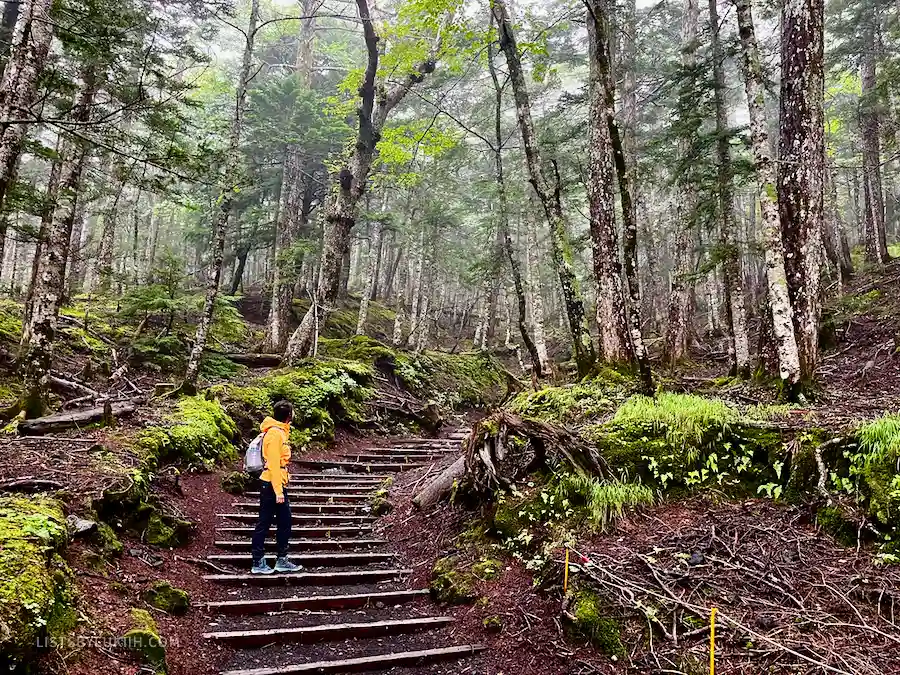
🍀 Lukiih’s Tips on Climbing Mt. Fuji
Reaching the summit of Mt. Fuji was one of the best things I did in Japan. The experience was remarkable, and I recommend it to anyone who can do it.
For some people, this hike will require some physical and mental preparation. It’s not an easy hike, and you should take it seriously (several hikers mistakenly don’t every year).
🌋 Hiking Mt. Fuji: Honest Review & Tips
Kyoto (Days 5-6)
On the fourth day, descend Mt. Fuji and take the train to Kyoto. Relax at a ryokan, a traditional Japanese inn.
Ryokans are usually attached to onsens (hot springs) and provide a set dinner, making them the perfect place to relax after hiking. I stayed at a ryokan on the outskirts of Kyoto.
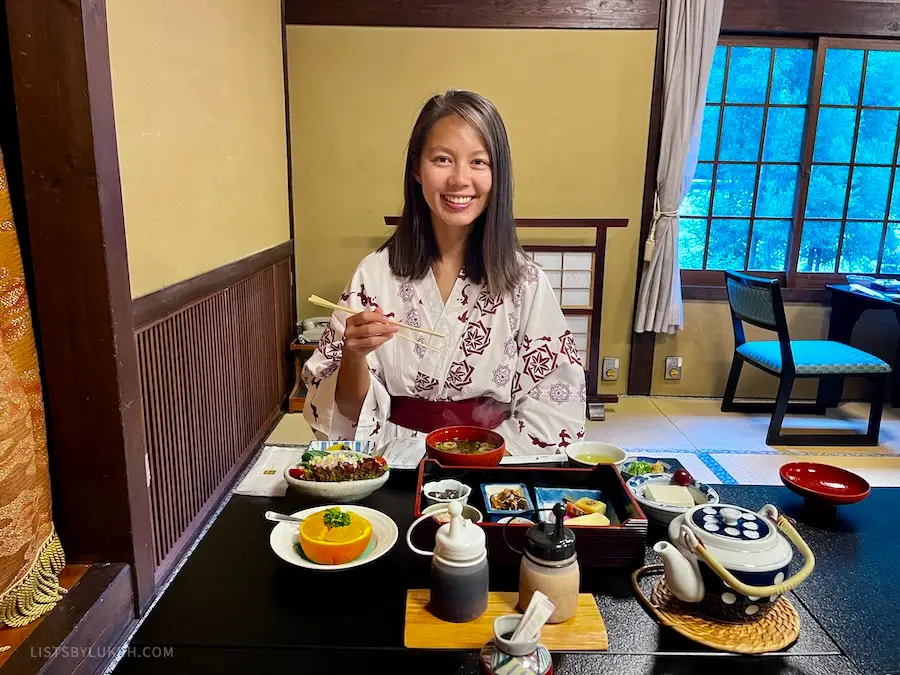
⛩️ Why Visit Kyoto?
Kyoto is one of Japan’s most beloved big cities. It has preserved its historic architecture and traditional atmosphere while developing into a modern city.
Kyoto is nicknamed the “City of a Thousand Temples” for a good reason. The city is home to thousands of famous temples and shrines that attract visitors from around the world.
It’s also well known for its Japanese gardens, natural beauty, and geisha culture.

🚇 Getting to Kyoto
From one of Mt. Fuji’s towns (e.g., Gotemba City), you can take a train to Kyoto Train Station.
Kyoto Station is the city’s largest railway station, connecting trains, subways, and bullet train lines.
⭐️ Top Attractions in Kyoto
When planning your Kyoto trip, it’s a good idea to space out your temple visits and give yourself enough time to appreciate them. This itinerary does just that and balances top attractions with different activities.
🗓️ Day 5 in Kyoto
Here’s how to efficiently see some of Kyoto’s top attractions on the first day there:
Stop #1: Arashiyama
Arashiyama is a historic and scenic district where visitors can spend half a day to a full day exploring its many attractions.
Its most famous attraction is the Arashiyama Bamboo Grove (get there before 9 am to avoid some of the crowd). Togetsu-kyo Bridge, Tenryu-Ji temple, and the Arashiyama Monkey Park are also popular.

While I enjoyed many of Arashiyama’s main attractions, I also highly recommend walking further north to explore all the smaller, less crowded temples that cost about $3 each. One of my favorite ones is the small, mossy Gioji Temple.
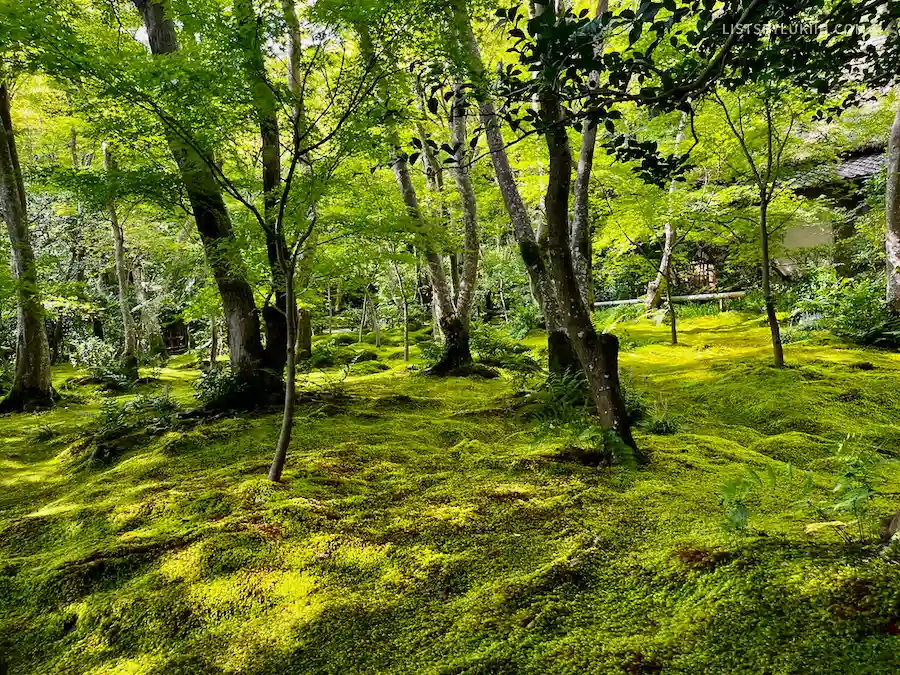
Stop #2: Nishiki Market
Head over to the famous Nishiki Market for lunch. Nicknamed “Kyoto’s Kitchen,” this market is filled with food stalls selling skewered meats, matcha-flavored desserts, seafood, pickled vegetables, and more.
Tako tamago, octopus stuffed with quail egg, is one of Nishiki Market’s most popular snacks.
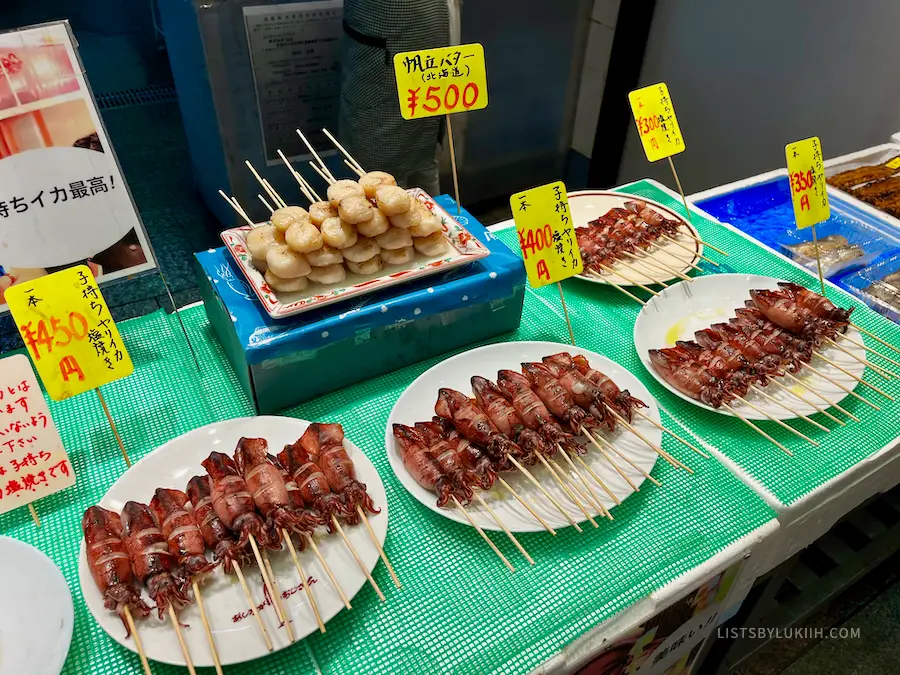
If you want to sample and learn about the history of the food from a local guide, go on this highly-rated food and cultural walking tour of the Nishiki Market.
Stop #3: Kiyomizu-dera Temple or Kinkaku-ji
After lunch, visit Kiyomizu-dera, one of Kyoto’s most iconic Buddhist temples, which offers scenic views and is an architectural marvel (its main hall was built entirely without a single nail).
Alternatively, travel further to see Kinkaku-ji, the “Golden Pavilion.” The building’s beauty will be immediately apparent.
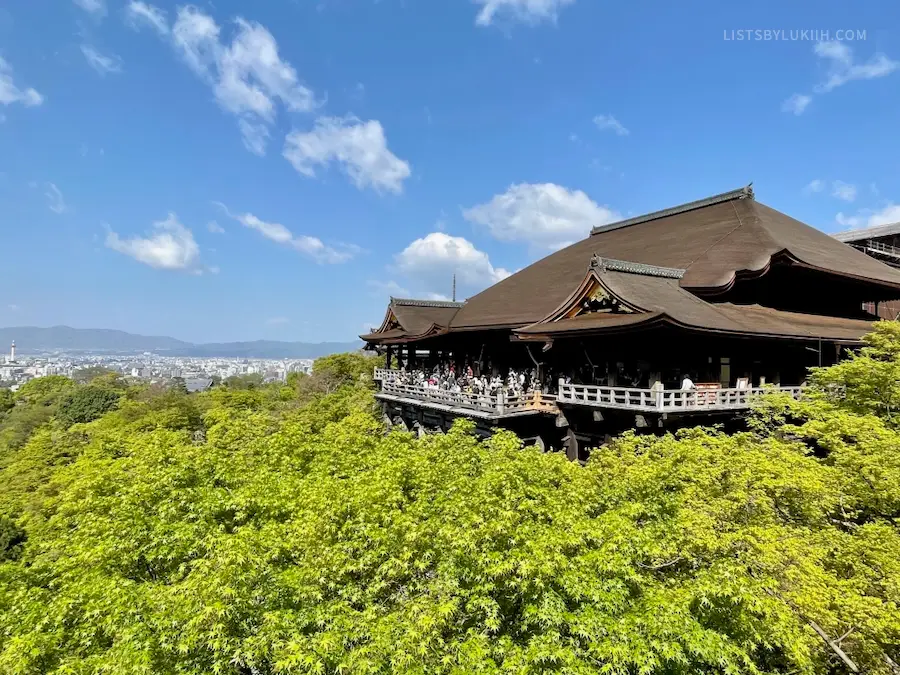
Stop #4: Gion
At night, walk around the Gion district, known for its geisha culture, teahouses, and traditional art. Its streets are decorated with lights, making it a pretty area to stroll through at night.
Finding a great place to eat on the weekend in popular Gion can be challenging, so make a reservation or have several ideas on where to eat. I was lucky to get a spot at Arakawa, a cozy yakiniku restaurant serving delicious grilled meat.
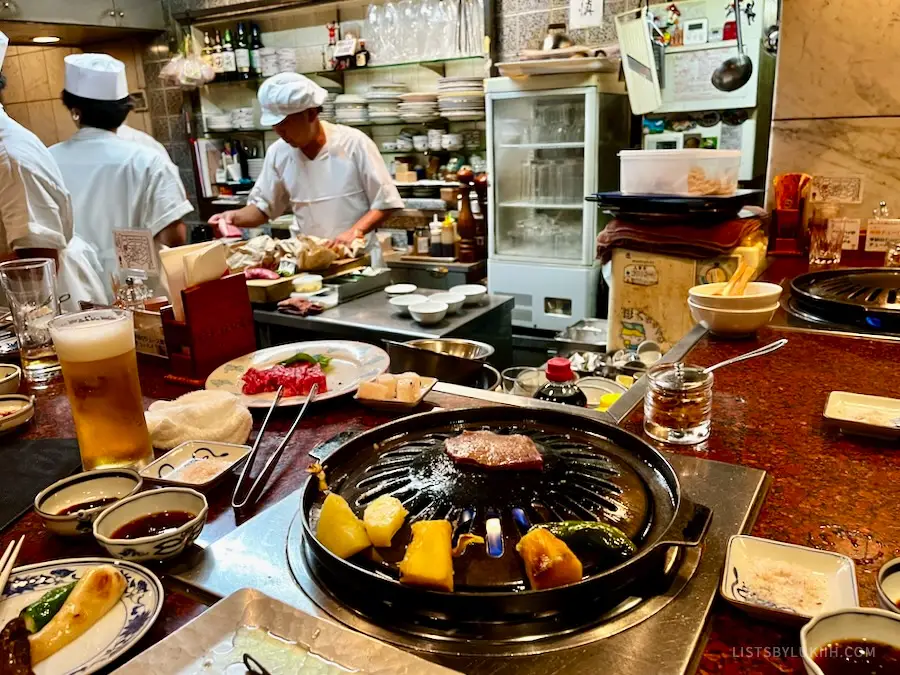
🗓️ Day 6 in Kyoto
Here’s an optimized itinerary for the second day in Kyoto:
Stop #1: Fushimi Inari Taisha
The Fushimi Inari Shrine is Kyoto’s most famous Shinto shrine, with around 10,000 red Torii Gates.
While many tourists only visit the beginning of the gates, you can spend over an hour “hiking” through them. The earlier and higher you go, the fewer crowds you’ll experience.
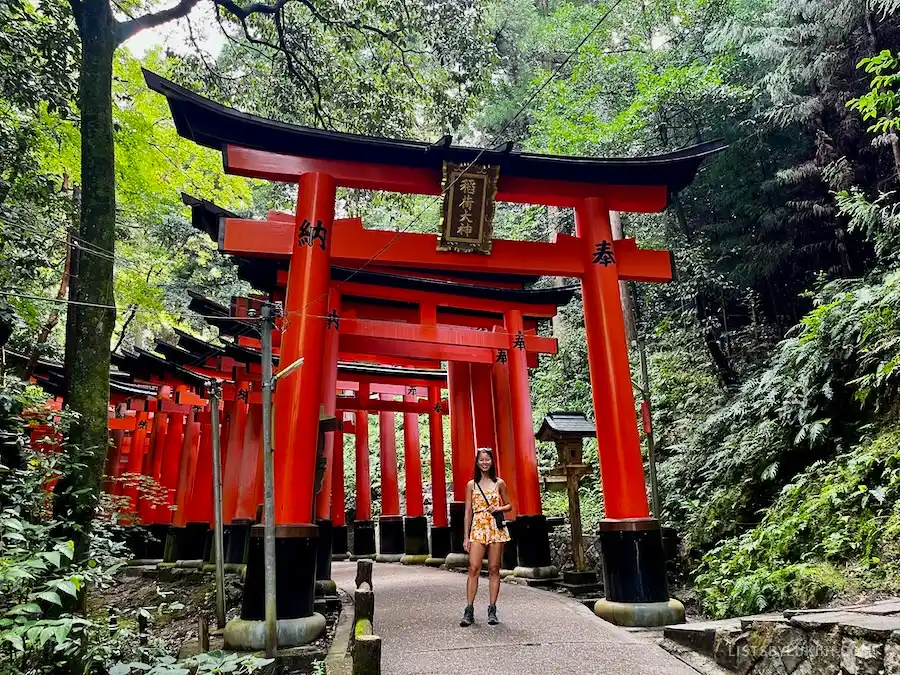
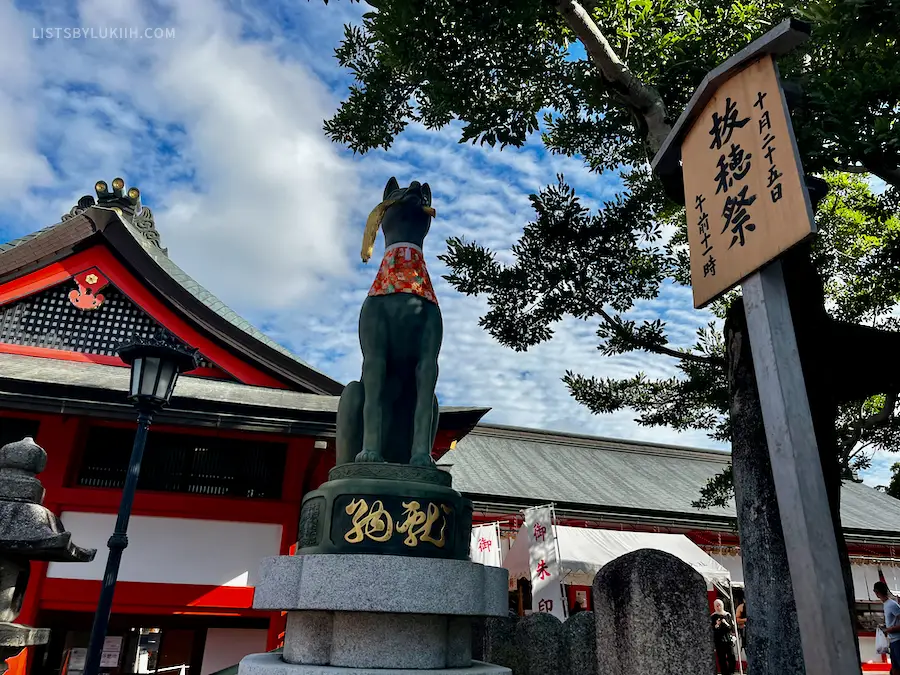
Stop #2: Nanzen-ji Temple or Imperial Palace
If you’re up for another temple, visit Nanzen-ji Temple, which has a stunning garden and surroundings. It’s also walking distance from the next attraction.
Alternatively, visit the Kyoto Imperial Palace to learn more about Japan’s history or are tired of temples.
Stop #3: Philosopher’s Path
After visiting two big attractions, enjoy a more tranquil stroll through a scenic walkway called the Philosopher’s Path.
The path has smaller, hidden temples that you can check out, but you can simply walk on the path the entire time and enjoy the atmosphere.
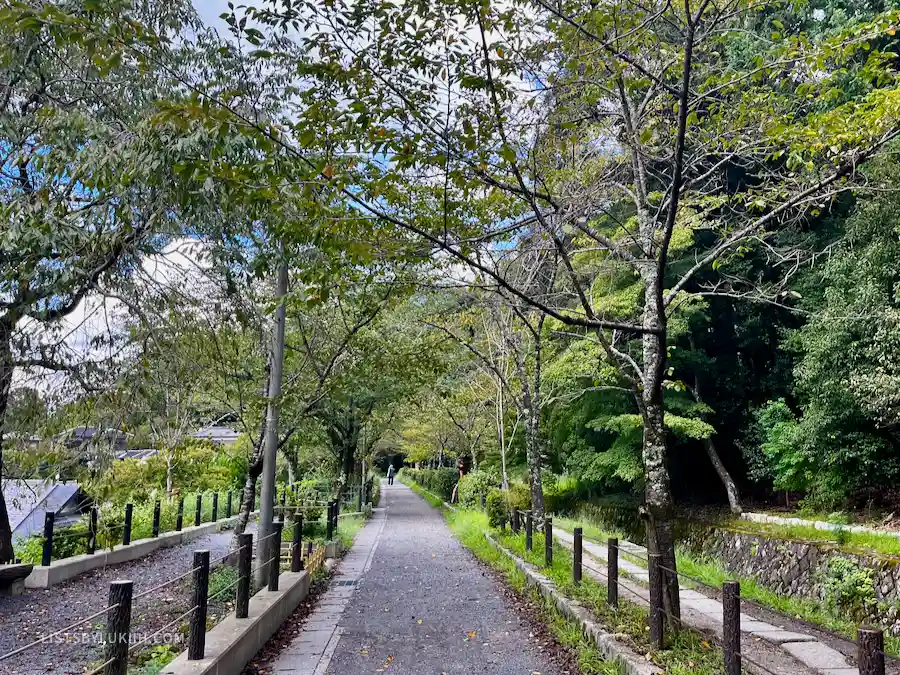
As mentioned before, Japan is very cyclist-friendly. If you’d rather pass through the Philosopher’s Path and other smaller gems while on a bike, you can do that with rental bikes and a local guide.
Stop #4: Onsen or Massage
End your day in Kyoto by booking a relaxing massage or taking a dip in an onsen in Kyoto.
I walked into a random massage place and got an amazing massage for less than $30.
🏠 Where To Stay in Kyoto
When in Kyoto, it’s a good idea to stay near a major, central station like Kyoto Station:
- Gion – Known for its historic charm, proximity to temples, and traditional tea houses, but can be crowded and more expensive.
- Higashiyama – Offers a tranquil, traditional atmosphere close to major attractions, though it lacks modern amenities and is more isolated for shopping or nightlife.
- Central Kyoto – Convenient for shopping, dining, and transport, but feels more commercial and busy compared to traditional areas.
I stayed at JP Inn near the central area, which is a convenient ten-minute walk from Kyoto Station. The accommodation is on a tranquil street with a traditional atmosphere. The rooms are modern and very spacious for Japan, with an in-unit washer and dryer.
🍀 Lukiih’s Tips for Kyoto
Like many other visitors, Kyoto was my favorite city out of Kyoto, Osaka, and Tokyo. The combination of traditional architecture in a city landscape is incredibly unique.
Here are my general tips for visiting Kyoto:
- Prioritize visiting famous attractions early in the morning – Given how crowded Kyoto’s top attractions are, it’s a good idea to select the top attractions you want to visit early in the morning to minimize crowds. For the itinerary above, I suggest visiting Arashiyama and Fushimi Inari Shrine on different days for this reason.
- Spend some time wandering local streets – You can enjoy the quiet atmosphere and explore the more authentic side of the city this way.
- Aim to visit two to four temples at most per day – Kyoto has over 1,000 temples, and it’s tempting to see as many as possible. Pace yourself and give yourself the time to enjoy each temple or shrine.
Cycle the Shimanami Kaido (Days 7-8)
After Kyoto, get ready to cycle through six Japanese islands.
🚲 Why Cycle the Shimanami Kaido?
The Shimanami Kaido is a 37-mile cycling route passing through six Japanese islands in the Hiroshima and Ehime prefectures. A large portion of the path is next to the ocean, so you’ll be surrounded by beautiful views in a largely tranquil area.
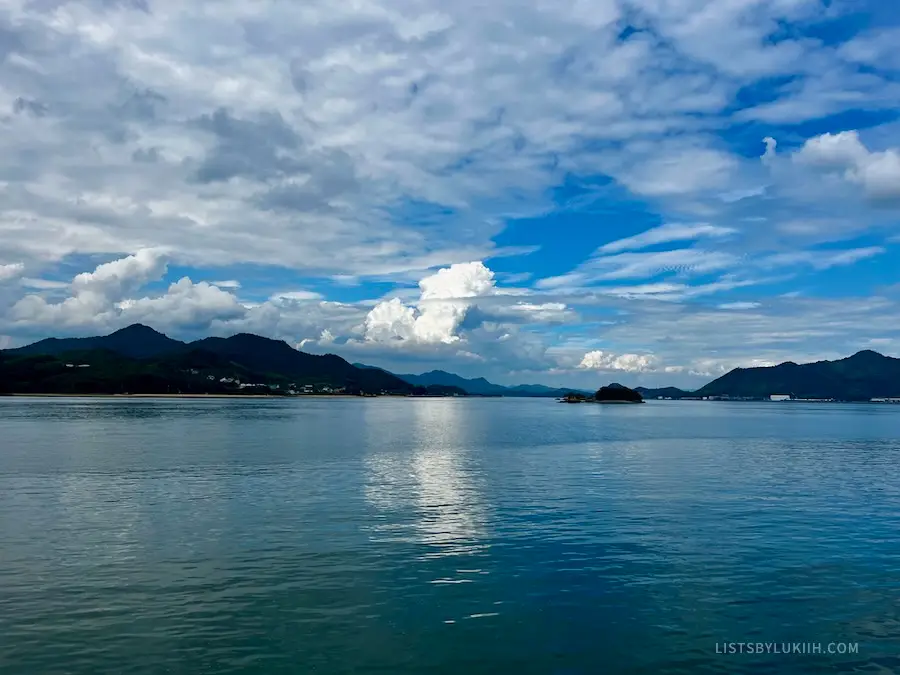
While the Shimanami Kaido is considered a “famous” cycling route, it’s not a crowded, sought-after activity among many tourists, so it’s a unique experience.
The route also has several attractions, restaurants, souvenir shops, and views that you can stop at. One of my favorite stops was a roadside vendor that sells divine salted ice cream.
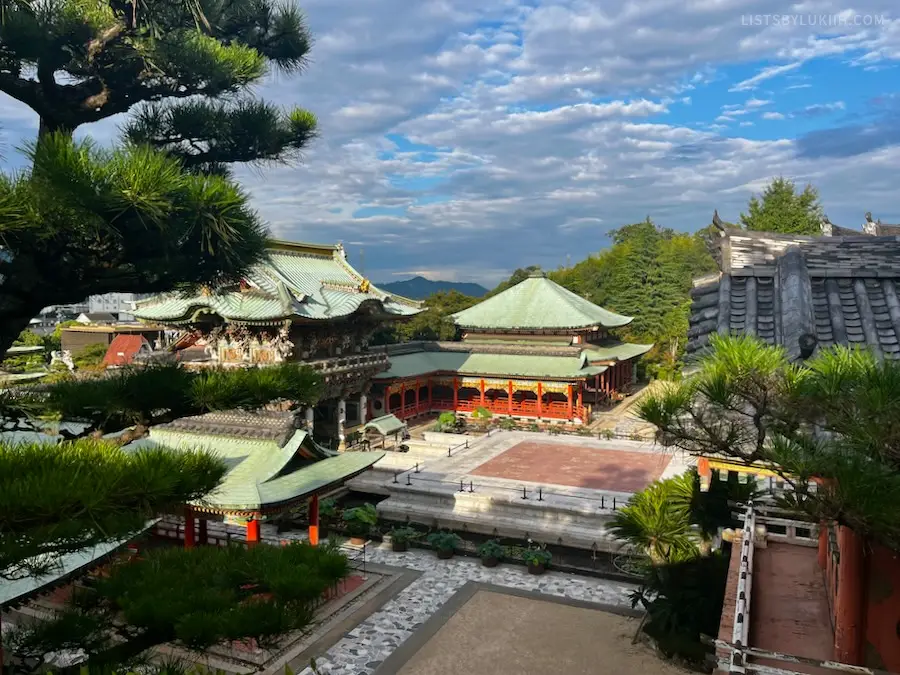
🚇 Getting to the Shimanami Kaido
You can start the Shimanami Kaido from either end of the route: in Onomichi City or Imabari City.
I took the train from Kyoto to the Onomichi Station to start my ride there.
🍀 Lukiih’s Tips for the Shimanami Kaido
The Shimanami Kaido, along with hiking Mt. Fuji, was a highlight of my Japan trip. I should add that while I’m not a cyclist, I am comfortable on a bike.
🚲 Cycling Shimanami Kaido: Honest Review & Tips
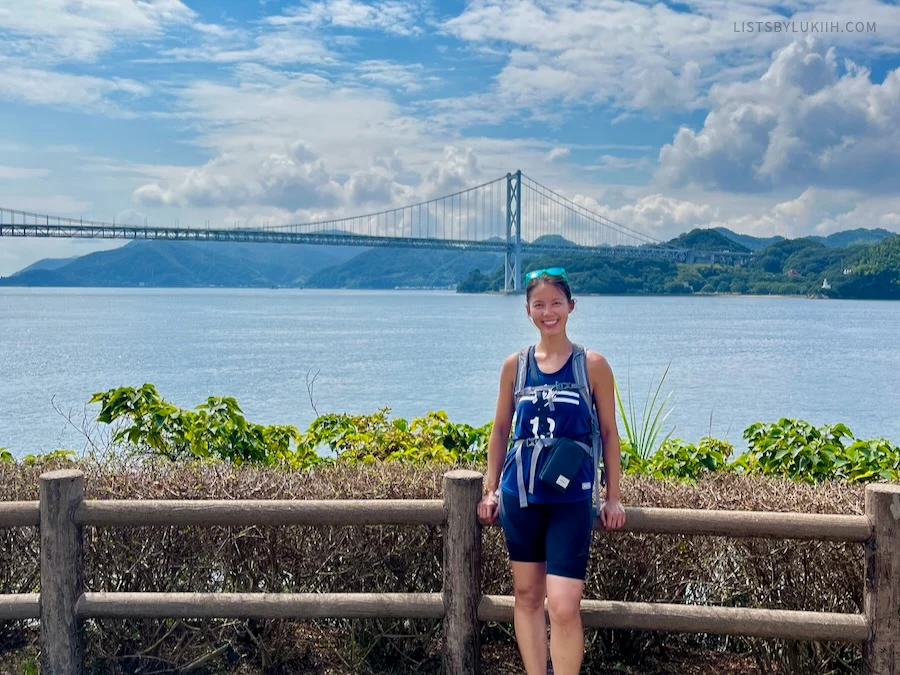
Day Trip: Osaka, Hakone or Nara (Day 9)
After finishing the Shimanami Kaido on the eighth day, you can take a train from the Imabari Station (where the cycling path ends) to the next major destination of your choice.
At this point of your Japan trip, you will have seen many attractions, hiked Japan’s tallest mountain, and cycled through several islands. How you spend your last two days in Japan depends on what else you want to see and experience.
Below are three great destinations that are ideal for a day trip and are located between Imabari City and Tokyo.
Osaka (Option 1)
🤔 Why Visit: Osaka is one of the three major cities in Japan often included in first-time visitors’ trips. Called the “Kitchen of Japan,” it is best known for its food culture and culinary prowess.

📍 Location: Osaka is three hours east of Shimanami Kaido and two-and-a-half hours west of Tokyo by train, making it an ideal midpoint for this itinerary.
Osaka has one of Japan’s major international airports, Kansai International Airport (KIX). You can fly out of here to spend two days in Osaka instead of returning to Tokyo.
⭐️ Top Attractions: Osaka’s top attractions are:
- Osaka Castle – a historically significant icon.
- Dotonbori – an entertainment district known for its neon lights.
- Osaka Aquarium – one of Japan’s most impressive aquariums.
- Kuromon Ichiba Market – one of the city’s most bustling markets filled with diverse food.
This award-winning food tour in Osaka takes you through the backstreets of the city to sample traditional food.
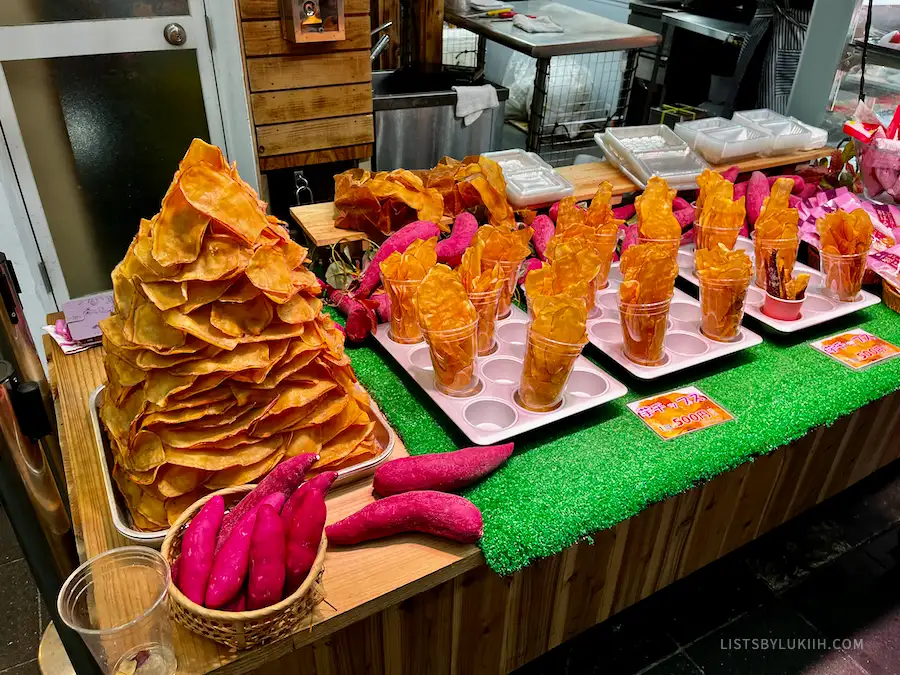
🍀 Lukiih’s Take: I spent a full day in Osaka and could only prioritize three out of the four attractions above, so be prepared to be unable to do everything in a day.
Having visited Kyoto and seen many of its impressive temples, I would skip Osaka Castle if you have limited time. However, I found the Osaka Aquarium more unique and well-designed than expected.
Hakone (Option 2)
🤔 Why Visit: Hakone is a picturesque town surrounded by beautiful nature and renowned for its onsens (natural hot springs). It’s also one of the few towns where you can see Mount Fuji on a clear day.
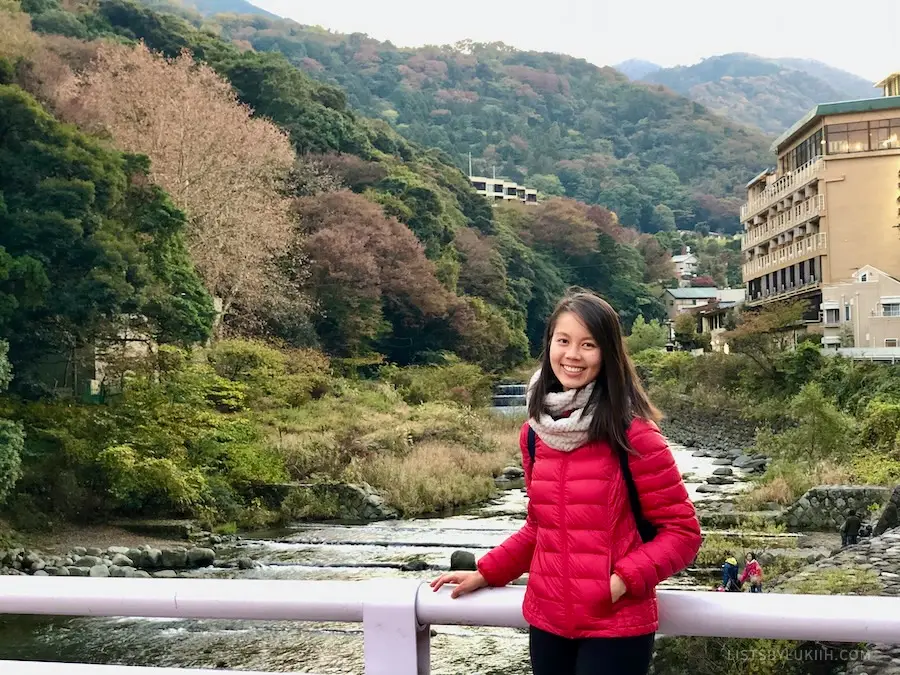
📍 Location: Hakone is six hours east of the Shimanami Kaido and two hours west of Tokyo, making it a good spot to be closer to Tokyo towards the end of your trip.
⭐️ Top Attractions: Hakone’s top attractions are:
- Hakone Open-Air Museum – a unique museum featuring art that interacts with the outdoor environment.
- Lake Ashi – one of Hakone’s most iconic natural attractions.
- Owakudani – a volcanic valley and a natural wonder.
🍀 Lukiih’s Take: I went to Hakone for the onsens. I stayed at a beautiful ryokan with a private onsen, which was ideal after an active, busy trip. I got to experience Hakone during the fall season, and even the train ride to this town was stunning.
Nara (Option 3)
🤔 Why Visit: Nara has gone viral on social media because it has free-roaming deer that bow to visitors. Besides its virality, Nara is a city known for its rich cultural heritage and beautiful nature.

📍 Location: Nara is four hours east of the Shimanami Kaido and three hours west of Tokyo, making it another great midpoint for this itinerary.
⭐️ Top Attractions: Nara’s top attractions are:
- Todai-ji Temple – the city’s most famous temple and a UNESCO World Heritage Site.
- Nara Park – home of all the free-roaming deer.
- Kasuga Taisha Shrine – a famous Shinto shrine.
If you’re not tired of being on a bike at this point, you can see the top attractions on a Nara half-day biking tour.
🍀 Lukiih’s Take: I ended up skipping Nara, but from what I’ve heard, it seems like a great place to visit if you like interacting with deer. Many visitors find it delightful to run into a free-roaming deer while wandering the streets of Nara.
Depart From Tokyo or Osaka (Day 10)
If you go to Osaka on day 9, you can fly out of Osaka’s international airport. If you go to Hakone or Nara, take a train to Tokyo for your last day in Japan.
During your last day in Tokyo, I recommend prioritizing delicious meals and shopping at stores like Don Quixote, a Japanese megastore, for souvenirs and unique snacks to bring home.
If you want to do something more relaxing, consider taking a two-hour river cruise down the Sumida River, which is a great way to end your Japan trip.
💰 My Japan Trip Cost: Budget Breakdown (2025)
With More Time: 2-Week Itinerary for Japan
If you have extra days in Japan, extending your time and modifying the itinerary above is easy. Below are two options for what an optimized Japan itinerary can look like for two weeks.
Two weeks is how long I traveled during my second Japan trip. My actual trip resembled the first option more, but I wished I had visited more areas like the second option below.
🗓️ Option 1: More Depth
You can easily extend your stay in any major city: Tokyo, Kyoto, or Osaka. Each has enough to do for at least three to five days.
If you want to minimize moving around different places, an optimized two-week itinerary for Japan can look like this:
- Tokyo – 3 days
- Mt. Fuji – 2 days
- Kyoto – 3 days
- Shimanami Kaido – 2 days
- Osaka – 2 days
- Tokyo – 2 days
🗓️ Option 2: More Breadth
Alternatively, if you want more breadth, you can see many places during your first trip to Japan. You can visit up to nine different cities and towns in two weeks, but this can get tiring for some travelers.
If you want to visit more places, an optimized two-week itinerary for Japan can look like this (you should feel comfortable skipping one or two places if it’s too much):
- Tokyo – 2 days
- Hakone – 1 day
- Mt. Fuji – 2 days
- Kyoto – 2 days
- Shimanami Kaido – 2 days
- Hiroshima – 1 day
- Osaka – 1 day
- Kobe – 1 day
- Nara – 1 day
- Tokyo – 1 days
Japan Trip Planner 2025
Make planning easier with my flexible, research-backed travel planner—shaped by real experience. It has:
- Up-to-date travel info
- A well-curated itinerary
- Practical, firsthand insights & tips
- A simple budget tracker
- A starter packing list
- Fully customizable sections
Built in Notion, this is the tool I personally use to plan every trip. I genuinely love it and creating a Notion account is free.
Lists by Lukiih is a small site I fund myself. Downloading my trip planner is the best way to support me and keep it running—thanks!
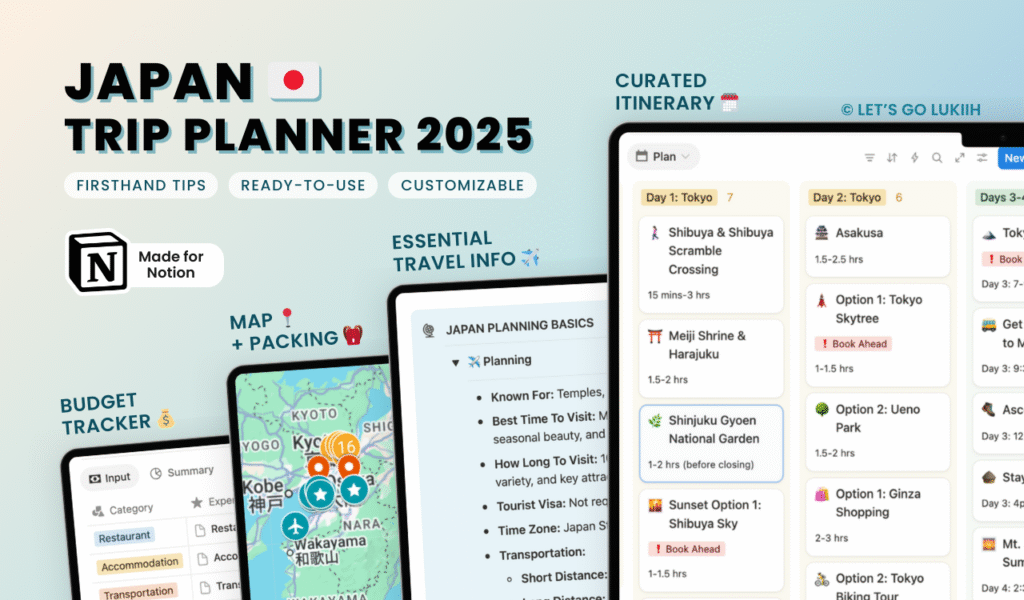
Japan Travel Guides
- 🇯🇵 Planning a Trip to Japan: 12 Practical Things To Know
- ⛩️ 10 Epic Days in Japan: A Unique & Active Itinerary
- 💰 My Japan Trip Cost: Budget Breakdown (2025)
- 🌋 Hiking Mt. Fuji: Honest Review & Tips
- 🚲 Cycling Shimanami Kaido: Honest Review & Tips
- ⛩️ Fushimi Inari Taisha: Honest Review & Tips
- 🙅🏻♀️ Etiquette in Japan: 13 Things Tourists Should Not Do
- ☀️ Visiting Japan in September: Tips & What To Know
- ❄️ Visiting Japan in December: Tips & What To Know